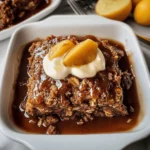These Veggie-Packed Egg Muffins have become an absolute game-changer in our household. Mornings used to be a frantic rush, often culminating in a hastily grabbed piece of fruit or, dare I say, a sugary cereal bar. I was desperate for a healthy, quick, and satisfying breakfast option that my kids would actually eat and that I could feel good about serving. Enter these little protein powerhouses! The first time I made them, the aroma of sautéed veggies and baking eggs filled the kitchen, and even my pickiest eater was intrigued. Success! They devoured them, and I was thrilled. Not only are they incredibly easy to whip up on a Sunday for grab-and-go breakfasts throughout the week, but they’re also endlessly customizable. We’ve experimented with different vegetable combinations and cheeses, and each batch is a new adventure. They’ve saved me so much time and stress, and knowing my family is starting their day with a nutritious, homemade meal is a fantastic feeling. They’re not just for breakfast either; they make a great light lunch with a side salad or a protein-packed snack after school or a workout.
Why You’ll Absolutely Love These Veggie-Packed Egg Muffins
Before we dive into the nitty-gritty of the recipe, let’s talk about why these Veggie-Packed Egg Muffins deserve a permanent spot in your culinary repertoire. If you’re searching for a breakfast solution that’s as delicious as it is nutritious, look no further.
- Ultimate Meal Prep Champion: This is arguably the biggest selling point. Spend a little time on a Sunday afternoon, and you’ll have healthy breakfasts sorted for the entire week. Imagine waking up, grabbing a couple of these from the fridge, a quick reheat (or enjoy them cold!), and you’re out the door. No more morning scramble (pun intended!).
- Nutrient-Dense Powerhouse: Packed with protein from the eggs and a vibrant array of vitamins and minerals from the vegetables, these muffins are a fantastic way to kickstart your day with sustained energy. They keep you feeling fuller for longer, helping to curb those mid-morning snack attacks.
- Incredibly Versatile & Customizable: This recipe is a fantastic base. Don’t like bell peppers? Swap them for zucchini. Have some leftover cooked broccoli? Throw it in! Want a spicy kick? Add some jalapeños or a pinch of red pepper flakes. The possibilities are endless, allowing you to cater to your personal preferences and use up whatever veggies you have on hand.
- Kid-Friendly & Picky-Eater Approved: The small, muffin form factor is often appealing to children. Finely chopping the vegetables makes them less noticeable for fussier eaters, and the addition of cheese can make them even more irresistible. It’s a fantastic way to sneak more veggies into their diet.
- Dietary-Friendly: Naturally gluten-free and low-carb, these egg muffins are suitable for various dietary needs, including keto, paleo (if you omit cheese or use a compliant version), and Whole30 (again, with cheese considerations).
- Budget-Friendly: Eggs and seasonal vegetables are generally inexpensive ingredients. Making a large batch of these muffins is far more economical than buying pre-made breakfast items or grabbing something from a coffee shop.
- Reduces Food Waste: Got a few random vegetables languishing in your crisper drawer? These egg muffins are the perfect vehicle to give them a delicious new life.
- Portable Perfection: Whether you’re commuting to work, sending kids off to school, or need a healthy snack on a road trip, these muffins are incredibly easy to transport. No mess, no fuss.
These aren’t just egg muffins; they’re a lifestyle upgrade, simplifying your mornings and boosting your nutritional intake without sacrificing flavor or convenience. Get ready to fall in love!
Ingredients for Delicious Veggie-Packed Egg Muffins
The beauty of this recipe lies in its simplicity and the quality of its components. Here’s what you’ll need to create a batch of approximately 12 flavor-packed muffins:
- Large Eggs: 12 (The star of the show, providing protein and structure)
- Milk or Cream: 1/4 cup (e.g., whole milk, almond milk, or a splash of heavy cream for extra richness; optional, but adds to fluffiness)
- Baby Spinach: 2 cups, packed (Wilts down significantly, adding iron and vitamins)
- Bell Peppers: 1 cup, finely diced (A mix of colors like red, yellow, or orange for visual appeal and sweetness)
- Onion: 1/2 medium, finely chopped (Or 1-2 shallots for a milder flavor; provides an aromatic base)
- Mushrooms: 1 cup, finely chopped (Cremini or white button mushrooms work well; adds umami and texture)
- Shredded Cheese: 1/2 to 3/4 cup (Cheddar, Monterey Jack, Colby, Feta, or a blend of your favorites; optional but recommended for flavor and texture)
- Olive Oil or Butter: 1 tablespoon (For sautéing the vegetables)
- Salt: 1/2 teaspoon, or to taste
- Black Pepper: 1/4 teaspoon, or to taste
- Optional Seasonings:
- Garlic Powder: 1/4 teaspoon
- Onion Powder: 1/4 teaspoon
- Dried Herbs: 1/2 teaspoon (e.g., Italian seasoning, oregano, or thyme)
- Fresh Herbs: 1-2 tablespoons, chopped (e.g., parsley, chives, or dill)
- Pinch of Red Pepper Flakes: For a little heat
A Note on Ingredients:
- Eggs: Use fresh, good-quality large eggs. You can also experiment with a mix of whole eggs and egg whites if you’re looking to reduce fat, but whole eggs provide better flavor and texture.
- Vegetables: The key is to chop them finely and fairly uniformly. This ensures they cook evenly and distribute well within the egg mixture. Feel free to substitute with other veggies like finely chopped broccoli florets, zucchini (squeeze out excess moisture), asparagus, or kale.
- Cheese: Pre-shredded cheese works fine for convenience, but shredding your own from a block often results in better melting as it doesn’t contain anti-caking agents.
- Sautéing Vegetables: While you can add raw veggies (especially softer ones like spinach), sautéing aromatics like onions and heartier vegetables like bell peppers and mushrooms first develops their flavor and removes excess moisture, preventing soggy muffins.
Step-by-Step Instructions for Perfect Veggie-Packed Egg Muffins
Follow these simple steps to create your batch of delicious and nutritious egg muffins.
- Preheat and Prepare: Preheat your oven to 375°F (190°C). Generously grease a standard 12-cup muffin tin with non-stick cooking spray, olive oil, or butter. Alternatively, use silicone muffin liners for the easiest removal and cleanup. If using paper liners, give them a light spray as well, as eggs can stick.
- Sauté the Vegetables (Highly Recommended):
- Heat the olive oil or butter in a medium skillet over medium heat.
- Add the chopped onion and cook for 3-4 minutes until softened and translucent.
- Add the diced bell peppers and chopped mushrooms. Cook for another 5-7 minutes, stirring occasionally, until the vegetables are tender and any excess moisture has evaporated.
- If using fresh spinach, add it to the skillet during the last 1-2 minutes of cooking. Stir until it wilts down completely. If using frozen spinach, ensure it’s thoroughly thawed and squeezed dry of all excess water before adding.
- Remove the skillet from the heat and let the vegetable mixture cool slightly. This step is crucial for flavor development and preventing watery muffins.
- Prepare the Egg Mixture:
- In a large mixing bowl, crack all 12 eggs.
- Add the milk or cream (if using), salt, black pepper, and any optional seasonings like garlic powder, onion powder, or dried herbs.
- Whisk vigorously until the yolks and whites are fully combined and the mixture is slightly frothy. Be careful not to over-whisk, as this can sometimes make them tough, but ensure it’s well-aerated.
- Combine Ingredients:
- Add the slightly cooled sautéed vegetables to the whisked egg mixture.
- If using shredded cheese and fresh herbs, add them now.
- Gently stir everything together until just combined. You want the vegetables and cheese to be evenly distributed throughout the egg base.
- Fill the Muffin Cups:
- Carefully and evenly divide the egg and vegetable mixture among the 12 prepared muffin cups. Fill each cup about two-thirds to three-quarters full. They will puff up while baking and then settle slightly as they cool. Avoid overfilling, as this can lead to spillage and uneven cooking.
- Bake to Perfection:
- Place the muffin tin in the preheated oven.
- Bake for 18-22 minutes, or until the egg muffins are set, puffed up, and lightly golden brown around the edges. The exact time will depend on your oven and the size of your muffin cups.
- To check for doneness, a toothpick inserted into the center of a muffin should come out clean, or with just a few moist crumbs (no wet egg). They should feel firm to a light touch.
- Cool and Serve:
- Once baked, carefully remove the muffin tin from the oven.
- Let the egg muffins cool in the tin for at least 5-10 minutes. This is important as they will be delicate when hot and this cooling period helps them firm up and makes them easier to remove. They will deflate slightly as they cool – this is normal.
- To remove, gently run a thin knife or a small offset spatula around the edge of each muffin if they seem to be sticking, then lift them out. If using silicone liners, they should pop out easily.
- Serve warm, at room temperature, or cold.
Nutrition Facts (Approximate)
- Servings: 12 muffins
- Calories per serving (1 muffin): Approximately 90-130 calories.
Disclaimer: The exact nutritional information will vary depending on the specific ingredients used (e.g., type of milk, amount and type of cheese, specific vegetables, and their quantities). This is an estimate based on the ingredients listed.
For a more precise calculation, you can use an online nutrition calculator and input your exact ingredients and quantities.
Preparation & Cook Time
Mastering your time in the kitchen is key, and these egg muffins are designed for efficiency!
- Preparation Time: 15-20 minutes (This includes chopping vegetables and whisking eggs. If your knife skills are speedy, you might do it in less!)
- Cook Time: 18-22 minutes
- Cooling Time: 5-10 minutes (in the tin)
- Total Time: Approximately 40-50 minutes from start to ready-to-eat (or ready-to-store).
This relatively short time investment yields a week’s worth of healthy breakfasts or snacks, making it an incredibly efficient meal prep option.
How to Serve Your Delicious Veggie-Packed Egg Muffins
These versatile Veggie-Packed Egg Muffins can be enjoyed in numerous ways, fitting seamlessly into various meal occasions. Here are some serving ideas to inspire you:
- The Classic Grab-and-Go Breakfast:
- Enjoy 2-3 muffins on their own for a quick, protein-packed start to your day.
- Pair with a piece of fresh fruit (like an apple, banana, or a handful of berries) for added fiber and vitamins.
- Serve alongside a small cup of Greek yogurt for an extra protein boost.
- A More Substantial Breakfast or Brunch:
- Serve with a slice of whole-wheat toast or a toasted English muffin.
- Accompany with a side of sliced avocado, drizzled with a little lemon juice and a sprinkle of everything bagel seasoning.
- Add a small side salad with a light vinaigrette for a refreshing brunch.
- Pair with a few slices of turkey bacon or a lean breakfast sausage.
- As a Light Lunch:
- Pack 2-3 muffins in your lunchbox.
- Serve atop a bed of mixed greens with your favorite dressing.
- Enjoy with a cup of warm soup, especially during cooler months.
- A Healthy Snack:
- One muffin makes a perfect mid-morning or afternoon snack to tide you over until your next meal.
- Great for a post-workout refuel due to their protein content.
- Dress Them Up with Toppings & Sauces:
- Salsa: A spoonful of your favorite salsa (mild, medium, or hot) adds a zesty kick.
- Hot Sauce: For those who like it spicy, a few dashes of Tabasco, Sriracha, or Cholula.
- Guacamole: Creamy guacamole is a delicious and healthy fat accompaniment.
- Sour Cream or Greek Yogurt: A dollop adds creaminess (plain Greek yogurt is a healthier alternative to sour cream).
- Fresh Herbs: A sprinkle of freshly chopped chives, parsley, or dill can brighten the flavors.
- Pesto: A smear of basil pesto can add a burst of Italian flavor.
- For the Kids:
- Serve with a side of ketchup (look for low-sugar options if preferred).
- Cut them into smaller, bite-sized pieces for little hands.
- Pair with fruit slices and a glass of milk.
No matter how you choose to serve them, these Veggie-Packed Egg Muffins are sure to be a hit. Experiment with different accompaniments to find your favorite combinations!
Customizing Your Veggie-Packed Egg Muffins: Make Them Your Own!
One of the greatest attributes of these egg muffins is their incredible adaptability. This base recipe is a fantastic starting point, but feel free to get creative and tailor them to your tastes, dietary needs, or whatever you have in your refrigerator. Here’s a world of possibilities:
1. Vegetable Variations:
The “veggie-packed” aspect is ripe for experimentation! Remember to chop all veggies finely and, for watery vegetables like zucchini or tomatoes, consider removing excess moisture.
- Leafy Greens: Kale (stemmed and finely chopped, perhaps lightly sautéed), Swiss chard, arugula (add at the end for a peppery bite).
- Cruciferous Veggies: Finely chopped broccoli florets or cauliflower florets (steam or sauté lightly first for best texture).
- Root Vegetables: Grated carrots, finely diced sweet potatoes (pre-cook until tender).
- Summer Squash: Diced zucchini or yellow squash (pat dry or lightly sauté to remove excess moisture).
- Other Ideas: Asparagus (blanched and chopped), corn kernels (fresh or frozen), peas, sun-dried tomatoes (oil-packed, drained and chopped), roasted red peppers (from a jar, patted dry and chopped).
2. Cheese Choices:
Cheese adds flavor, richness, and helps bind the muffins.
- Sharp & Tangy: Feta cheese (crumbled), goat cheese (crumbled), sharp cheddar.
- Melty & Mild: Mozzarella, Provolone, Monterey Jack, Colby Jack.
- Spicy: Pepper Jack cheese.
- Dairy-Free: You can omit cheese entirely or use your favorite dairy-free shredded cheese alternative (results may vary in terms of meltiness). Nutritional yeast can also add a “cheesy” umami flavor.
3. Protein Power-Ups:
For an even heartier muffin, consider adding cooked proteins. Ensure they are pre-cooked and diced or crumbled.
- Bacon: Crispy cooked bacon, crumbled.
- Sausage: Cooked breakfast sausage (pork, turkey, or chicken), crumbled.
- Ham: Diced cooked ham.
- Chicken: Shredded or diced cooked chicken.
- Plant-Based: Crumbled plant-based sausage or bacon.
4. Herb & Spice Infusions:
Elevate the flavor profile with different herbs and spices.
- Fresh Herbs: Chives, parsley, dill, cilantro, basil, oregano, thyme (add with the vegetables or sprinkle on top before baking).
- Dried Spices: Smoked paprika (for a smoky flavor), cumin, chili powder, curry powder, turmeric (for color and earthy notes), everything bagel seasoning (sprinkle on top).
5. International Flair:
- Mediterranean: Feta cheese, spinach, sun-dried tomatoes, Kalamata olives (chopped), and a pinch of oregano.
- Mexican-Inspired: Pepper Jack cheese, black beans (rinsed and drained), corn, jalapeños (finely diced), and a pinch of cumin or chili powder. Serve with salsa.
- Italian-Style: Mozzarella, roasted red peppers, spinach, and Italian seasoning or fresh basil.
Tips for Customization:
- Moisture Management: If using very watery vegetables (like fresh tomatoes or zucchini), it’s a good idea to deseed them, chop them, and then pat them dry with a paper towel or even give them a quick sauté to cook off some moisture. This prevents soggy muffins.
- Don’t Overload: While it’s tempting to pack them full, be mindful not to add too many fillings, as this can affect the egg-to-filling ratio and prevent them from setting properly. Aim for about 1/2 to 3/4 cup of total add-ins (excluding cheese) per 6 eggs as a general guideline.
- Taste Test (if applicable): If you’re sautéing your vegetable mix, you can taste it (before adding raw egg, of course!) and adjust seasonings as needed.
Have fun experimenting! The perfect Veggie-Packed Egg Muffin combination is waiting for you to discover it.
Storing and Reheating for Meal Prep Success
Proper storage and reheating are key to enjoying your Veggie-Packed Egg Muffins throughout the week. Here’s how to keep them fresh and delicious:
Storing:
- Cool Completely: This is the most crucial step. Allow the egg muffins to cool completely on a wire rack after removing them from the muffin tin. Storing them while still warm will create condensation, leading to soggy muffins and potential bacterial growth.
- Refrigeration:
- Once completely cool, place the muffins in an airtight container. You can line the container with a paper towel to absorb any residual moisture.
- Store in the refrigerator for up to 3-4 days. Some say up to 5, but for best texture and freshness, 3-4 days is optimal.
- Freezing (for longer storage):
- Egg muffins freeze exceptionally well, making them perfect for longer-term meal prep.
- Method 1 (Individually Wrapped): Wrap each completely cooled muffin tightly in plastic wrap, then place them in a freezer-safe zip-top bag or airtight container. This method is best for preventing freezer burn and makes it easy to grab individual muffins.
- Method 2 (Flash Freezing): Place the cooled muffins on a baking sheet in a single layer, ensuring they aren’t touching. Freeze for 1-2 hours, or until solid. Once frozen solid, transfer them to a freezer-safe zip-top bag or airtight container. This prevents them from sticking together.
- Label the bag or container with the date. They can be stored in the freezer for up to 2-3 months for best quality.
Reheating:
You have several options for reheating your egg muffins:
- Microwave (Quickest):
- Place 1-2 muffins on a microwave-safe plate.
- Microwave on high for 30-60 seconds, or until warmed through. Cooking time will vary depending on your microwave’s wattage and whether the muffins are refrigerated or frozen.
- For frozen muffins, you might need 1-2 minutes. You can also thaw them overnight in the refrigerator first for quicker microwave reheating.
- Be cautious not to overheat, as this can make the eggs rubbery.
- Oven or Toaster Oven (Best Texture):
- This method helps retain a better texture, closer to freshly baked.
- Preheat your oven or toaster oven to 350°F (175°C).
- Place the muffins on a baking sheet.
- Reheat for 5-10 minutes if refrigerated, or 10-15 minutes if frozen, until warmed through.
- If reheating from frozen, you can cover them loosely with foil for the first half of the time to prevent over-browning while they heat internally.
- Air Fryer:
- Preheat your air fryer to around 320°F (160°C).
- Place the egg muffins in the air fryer basket in a single layer.
- Reheat for 3-5 minutes if refrigerated, or 6-8 minutes if frozen, until heated through and slightly crisped on the outside. Check frequently to prevent burning.
Tips for Reheating:
- Avoid Overcooking: Reheat only until warmed through. Overcooking can lead to dry, rubbery egg muffins.
- Thawing: While you can reheat from frozen, thawing them overnight in the refrigerator generally yields slightly better results, especially for microwave reheating.
- Moisture: If your muffins seem a little dry after reheating (especially in the microwave), you can place a damp paper towel over them while heating.
Enjoy your conveniently prepped and perfectly reheated Veggie-Packed Egg Muffins any time!
Additional Pro Tips for Egg Muffin Mastery
Want to take your Veggie-Packed Egg Muffins from great to absolutely exceptional? Here are five extra tips to ensure perfect results every single time:
- Don’t Skimp on Greasing the Muffin Tin: This cannot be stressed enough, especially if you’re not using silicone liners. Eggs have a notorious habit of sticking. Use a good quality non-stick spray, melted butter, or oil, and ensure you coat every nook and cranny of the muffin cups, including the top surface of the tin around the cups, as they can puff up and touch it. Silicone liners are a fantastic investment if you plan to make these regularly – muffins pop right out!
- Manage Vegetable Moisture for Best Texture: Excess moisture from vegetables is the number one enemy of perfectly textured egg muffins, often leading to a watery or spongy result.
- Sauté Aromatics & Heartier Veggies: As mentioned in the instructions, sautéing onions, peppers, mushrooms, etc., not only enhances their flavor but also cooks off excess water.
- Spinach Strategy: If using fresh spinach, sauté it until wilted. If using frozen spinach, thaw it completely and then squeeze out all the excess water with your hands or by pressing it in a fine-mesh sieve.
- Watery Veggies: For vegetables like zucchini or tomatoes, consider grating or dicing, then lightly salting and letting them sit for a few minutes to draw out moisture, then pat dry with paper towels.
- Achieve Even Distribution of Fillings: To avoid some muffins being loaded with veggies while others are mostly egg, ensure your fillings are finely chopped and well-mixed into the egg base. Before pouring into the muffin cups, give the mixture a final gentle stir. You can also spoon a little bit of the veggie/cheese mixture into each muffin cup first, then pour the egg mixture over them, ensuring each muffin gets a good share.
- Avoid Overbaking for Tenderness: Overbaked egg muffins can become rubbery and dry. Bake them just until they are set and a toothpick inserted into the center comes out clean. They will continue to cook slightly from residual heat after being removed from the oven. They should be puffed and lightly golden, but not overly browned.
- Let Them Cool Slightly Before Removing: Patience is a virtue! When egg muffins first come out of the oven, they are very delicate and puffed up. Allowing them to cool in the muffin tin for 5-10 minutes helps them to set further and contract slightly, making them much easier to remove without breaking. They will deflate a bit during this cooling period – this is perfectly normal.
By keeping these pro tips in mind, you’ll be well on your way to baking batches of flawless, delicious, and perfectly textured Veggie-Packed Egg Muffins every time!
Frequently Asked Questions (FAQ) – Veggie-Packed Egg Muffins
Here are answers to some common questions you might have about making Veggie-Packed Egg Muffins:
- Q: Why are my egg muffins watery or soggy?
- A: This is usually due to excess moisture from the vegetables. Make sure to:
- Sauté vegetables like onions, peppers, and mushrooms to cook off their water content.
- If using frozen spinach, thaw it completely and squeeze out as much liquid as possible.
- For watery fresh veggies like zucchini or tomatoes, chop them, lightly salt them to draw out moisture, then pat them dry with paper towels before adding to the egg mixture.
- Don’t overcrowd the pan when sautéing, as this will steam the vegetables instead of browning them and releasing moisture.
- A: This is usually due to excess moisture from the vegetables. Make sure to:
- Q: Can I make these egg muffins dairy-free?
- A: Yes, absolutely!
- Milk: Simply omit the milk/cream or substitute it with an unsweetened plant-based milk like almond milk, soy milk, or oat milk. Water can also be used.
- Cheese: You can leave out the cheese entirely, or use a dairy-free cheese alternative. If omitting cheese, you might want to slightly increase the seasoning to compensate for the lost flavor. Adding a tablespoon or two of nutritional yeast can impart a “cheesy” umami flavor without dairy.
- A: Yes, absolutely!
- Q: Why did my egg muffins deflate so much after baking?
- A: It’s normal for egg muffins to puff up significantly during baking and then deflate somewhat as they cool – this is due to the air and steam trapped inside escaping. However, excessive deflation can be caused by:
- Over-whisking the eggs: Incorporating too much air can cause them to rise dramatically and then fall dramatically. Whisk just until combined and slightly frothy.
- Oven temperature fluctuations: Opening the oven door too frequently can cause temperature drops.
- Underbaking: If not cooked through, they lack the structure to hold their shape.
- A slight deflation is perfectly fine and doesn’t affect the taste or texture negatively.
- A: It’s normal for egg muffins to puff up significantly during baking and then deflate somewhat as they cool – this is due to the air and steam trapped inside escaping. However, excessive deflation can be caused by:
- Q: Can I use only egg whites for a lower-fat version?
- A: Yes, you can substitute some or all of the whole eggs with egg whites. Keep in mind that using only egg whites will result in a slightly different texture – they may be a bit more rubbery or less tender and flavorful than muffins made with whole eggs, which benefit from the fat and richness of the yolks. A common ratio is two egg whites for one whole egg. You might want to add a little extra seasoning or herbs if using all egg whites.
- Q: How do I prevent the egg muffins from sticking to the muffin tin?
- A: This is a common issue! Here are the best strategies:
- Grease VERY well: Use a generous amount of non-stick cooking spray, melted butter, or oil. Ensure you coat the bottom and all sides of each muffin cup thoroughly. Don’t forget the flat top surface of the tin around the cups.
- Silicone Muffin Liners: These are a game-changer. Muffins pop right out, and cleanup is a breeze.
- Paper Liners (with a caveat): Regular paper liners can sometimes stick to eggs. If using them, choose high-quality, greaseproof paper liners, and it’s still a good idea to give the inside of the paper liners a light spray with non-stick spray.
- Let them cool slightly: As mentioned before, letting the muffins cool in the tin for 5-10 minutes helps them release more easily. Then, if needed, run a thin knife or offset spatula around the edges before lifting them out.
- A: This is a common issue! Here are the best strategies:

Veggie-Packed Egg Muffins Recipe
Ingredients
- Large Eggs: 12 (The star of the show, providing protein and structure)
- Milk or Cream: 1/4 cup (e.g., whole milk, almond milk, or a splash of heavy cream for extra richness; optional, but adds to fluffiness)
- Baby Spinach: 2 cups, packed (Wilts down significantly, adding iron and vitamins)
- Bell Peppers: 1 cup, finely diced (A mix of colors like red, yellow, or orange for visual appeal and sweetness)
- Onion: 1/2 medium, finely chopped (Or 1-2 shallots for a milder flavor; provides an aromatic base)
- Mushrooms: 1 cup, finely chopped (Cremini or white button mushrooms work well; adds umami and texture)
- Shredded Cheese: 1/2 to 3/4 cup (Cheddar, Monterey Jack, Colby, Feta, or a blend of your favorites; optional but recommended for flavor and texture)
- Olive Oil or Butter: 1 tablespoon (For sautéing the vegetables)
- Salt: 1/2 teaspoon, or to taste
- Black Pepper: 1/4 teaspoon, or to taste
- Optional Seasonings:
- Garlic Powder: 1/4 teaspoon
- Onion Powder: 1/4 teaspoon
- Dried Herbs: 1/2 teaspoon (e.g., Italian seasoning, oregano, or thyme)
- Fresh Herbs: 1-2 tablespoons, chopped (e.g., parsley, chives, or dill)
- Pinch of Red Pepper Flakes: For a little heat
Instructions
- Preheat and Prepare: Preheat your oven to 375°F (190°C). Generously grease a standard 12-cup muffin tin with non-stick cooking spray, olive oil, or butter. Alternatively, use silicone muffin liners for the easiest removal and cleanup. If using paper liners, give them a light spray as well, as eggs can stick.
- Sauté the Vegetables (Highly Recommended):
- Heat the olive oil or butter in a medium skillet over medium heat.
- Add the chopped onion and cook for 3-4 minutes until softened and translucent.
- Add the diced bell peppers and chopped mushrooms. Cook for another 5-7 minutes, stirring occasionally, until the vegetables are tender and any excess moisture has evaporated.
- If using fresh spinach, add it to the skillet during the last 1-2 minutes of cooking. Stir until it wilts down completely. If using frozen spinach, ensure it’s thoroughly thawed and squeezed dry of all excess water before adding.
- Remove the skillet from the heat and let the vegetable mixture cool slightly. This step is crucial for flavor development and preventing watery muffins.
- Prepare the Egg Mixture:
- In a large mixing bowl, crack all 12 eggs.
- Add the milk or cream (if using), salt, black pepper, and any optional seasonings like garlic powder, onion powder, or dried herbs.
- Whisk vigorously until the yolks and whites are fully combined and the mixture is slightly frothy. Be careful not to over-whisk, as this can sometimes make them tough, but ensure it’s well-aerated.
- Combine Ingredients:
- Add the slightly cooled sautéed vegetables to the whisked egg mixture.
- If using shredded cheese and fresh herbs, add them now.
- Gently stir everything together until just combined. You want the vegetables and cheese to be evenly distributed throughout the egg base.
- Fill the Muffin Cups:
- Carefully and evenly divide the egg and vegetable mixture among the 12 prepared muffin cups. Fill each cup about two-thirds to three-quarters full. They will puff up while baking and then settle slightly as they cool. Avoid overfilling, as this can lead to spillage and uneven cooking.
- Bake to Perfection:
- Place the muffin tin in the preheated oven.
- Bake for 18-22 minutes, or until the egg muffins are set, puffed up, and lightly golden brown around the edges. The exact time will depend on your oven and the size of your muffin cups.
- To check for doneness, a toothpick inserted into the center of a muffin should come out clean, or with just a few moist crumbs (no wet egg). They should feel firm to a light touch.
- Cool and Serve:
- Once baked, carefully remove the muffin tin from the oven.
- Let the egg muffins cool in the tin for at least 5-10 minutes. This is important as they will be delicate when hot and this cooling period helps them firm up and makes them easier to remove. They will deflate slightly as they cool – this is normal.
- To remove, gently run a thin knife or a small offset spatula around the edge of each muffin if they seem to be sticking, then lift them out. If using silicone liners, they should pop out easily.
- Serve warm, at room temperature, or cold.
Nutrition
- Serving Size: One Normal Portion
- Calories: 90-130





